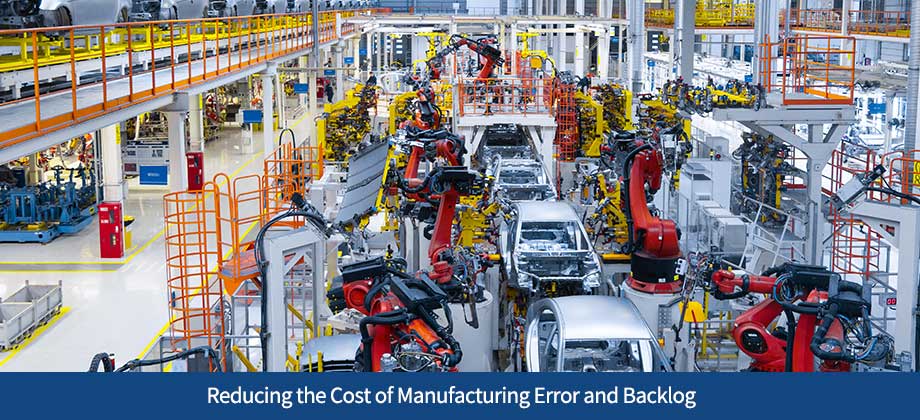Reducing the Cost of Manufacturing Error and Backlog: A Guide for Manufacturers

In manufacturing, errors and backlog can cost a company a great deal of money. Not only do these issues lead to reduced production rates and missed deadlines, but they can also lead to wasted materials and resources. As manufacturers, it is essential to reduce these costs to increase efficiency, maximize productivity, and ensure customer satisfaction. In this blog post, we will discuss the steps manufacturing executives can take to reduce the cost of manufacturing errors and backlog.
1. Identify the Root Causes:
The first step in reducing the cost of manufacturing errors and backlog is to identify the root causes. Analyzing the manufacturing process and pinpointing areas where errors and backlog occur can help you understand the root causes of these problems. Once identified, appropriate measures can be taken to address them.
One effective method of identifying the root causes is to conduct a Failure Mode and Effects Analysis (FMEA) of the manufacturing process. FMEA is a systematic approach to identifying potential failures in a process, analyzing their effect on the final product, and coming up with steps to eliminate or mitigate them.
2. Implement Quality Control Processes:
A well-designed quality control process can significantly reduce the incidence of errors and backlog in manufacturing. Quality control processes can help detect and fix problems at various stages of production before they become significant issues. This includes setting up checkpoints at crucial stages of production to review testing, and implementing a rigorous inspection process before shipping products. A carefully designed quality control process should be based on the data collected during the root cause analysis and any relevant industry standards.
3. Invest in Automation:
Investing in automation can reduce manufacturing costs by eliminating manual processes and reducing the likelihood of errors. By replacing manual processes with automated ones, your manufacturing process is more efficient, reduces errors, and increases productivity.
Automation technology currently available includes robots, PLC systems, sensors, and data management systems. Some systems are advanced enough that they can even detect and fix errors in the production process automatically. Capital investments may need to be made in the initial implementation of automation systems, but they ultimately lead to cost savings and increased output.
4. Use Predictive Analytics:
Predictive analytics is a valuable tool for reducing manufacturing errors. By analyzing production data such as output, quality metrics, and maintenance logs, predictive modeling can identify which factors lead to manufacturing errors and backlog. Using this data, companies can quickly address these factors before problems occur.
Predictive analytics can help companies keep track of inventory levels, production capacity, and scheduling. It can also alert manufacturing executives when there is a risk of errors or backlog and create a plan of action to reduce these risks.
5. Foster a Culture of Continuous Improvement:
Finally, manufacturing executives can reduce the cost of manufacturing errors and backlog by encouraging a culture of continuous improvement. The idea is to embrace a mindset of ongoing evaluation, and to consistently look at ways to make processes more efficient, improve quality, and reduce costs. This involves providing team members and employees with the tools they need to do their jobs effectively, such as training and education. It also includes setting achievable and meaningful performance metrics to track progress and providing a system for recognizing and rewarding improvements.
Reducing the cost of manufacturing errors and backlog requires a proactive approach that includes identifying root causes, implementing quality control processes, investing in automation, using predictive analytics, and fostering a culture of continuous improvement.
Incorporating these steps into your manufacturing process can save your company money and increase efficiency. By prioritizing quality control processes, identifying problems with root causes and using data to determine risk factors, manufacturers can reduce the likelihood of errors and backlog during production and increase customer satisfaction. The steps listed here can be used as a guide to build a better manufacturing process that is more efficient, cost-effective and productive.
Your privacy is important to us. ARF Financial will never sell or rent your information to any third party. Click here for more information about our privacy policy.

